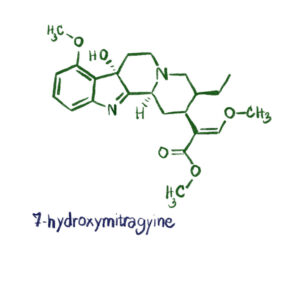
Your Really Goo’d Guide to 7-HYDROXY
7-HYDROXY, also known as 7-Hydroxymitragynine (7-OH), is a naturally occurring alkaloid found in the leaves of the Mitragyna speciosa tree (commonly known
Cannabinoid edibles, ranging from gummies to chocolates and beyond, have surged in popularity as an alternative to smoking or vaping cannabis. As the market for these products expands rapidly, so does the need for consumers to understand what’s in them. Lab reports are a crucial tool for verifying the safety, potency, and composition of cannabinoid edibles. These reports come in two primary forms: long-form and short-form. And that’s why we’ll be covering key aspects of reading cannabinoid gummies lab reports for anyone looking to make informed decisions about their cannabis consumption.
Lab reports are essential for ensuring the following:
Before diving into the specifics of long-form and short-form lab reports, it’s imperative to understand what these reports generally contain and why they are important. Lab reports for cannabinoid edibles are typically provided by third-party laboratories to ensure objectivity and reliability. These reports analyze the edibles for various factors, including:
Long-form lab reports provide a comprehensive analysis of the cannabinoid edible. These reports are typically several pages long and contain detailed information on every aspect of the product’s composition and safety. Here’s a breakdown of the key sections you will find in a long-form lab report:
Short-form lab reports, as the name suggests, provide a more concise overview of the product’s testing results. These reports are typically one or two pages long and focus on the most critical aspects of the product. Here’s what you can expect to find in a short-form lab report:
Whether you’re looking at a long-form or short-form lab report, understanding how to interpret the information is crucial. Here are some tips for making sense of the data:
Reading and understanding long-form and short-form cannabinoid edibles lab reports is a crucial skill for any cannabis consumer, as by learning how to interpret these reports, consumers can make informed decisions, ensuring they choose safe, effective, and high-quality products.
Not to mention, as the cannabis market continues to grow, the importance of third-party lab testing, and transparent reporting cannot be overstated. Whether you’re a seasoned cannabis user or a newcomer, understanding lab reports is key to navigating the world of cannabinoid edibles with confidence.

7-HYDROXY, also known as 7-Hydroxymitragynine (7-OH), is a naturally occurring alkaloid found in the leaves of the Mitragyna speciosa tree (commonly known

No doubt folks, when it comes to the world of gummies, there really is a lot to love—especially when these edibles are

Are you someone who loves the idea of a tasty treat that also offers a unique experience? Great, because you’re in for